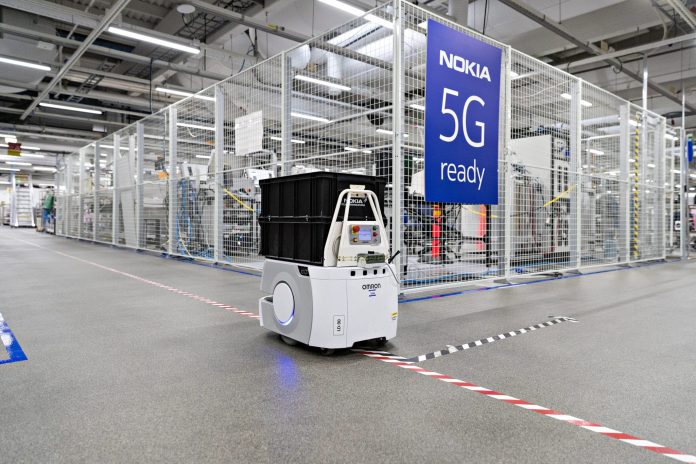New research from Nokia says one third of enterprises in the energy, manufacturing, cities, and transportation sectors are already using 5G to drive industrial performance and digital change. Three in five enterprises will look to mobile operators for direction when planning 5G services, according to the study.
Nokia urged, again, operators to grasp the nettle of industrial 5G, even if they are stung by the prospect of enterprises seeking control of their own networking. It restated as well that operators are crucial to the industrial networking mix, having suggested previously they can even take a leadership position on private networking with vertical spectrum.
“Not only do operators bring valuable spectrum assets, but also deep enterprise relationships in some of the verticals we are targeting,” commented Stephane Daeuble, in charge of marketing for enterprise solutions at Nokia, following up on yesterday’s piece in Enterprise IoT Insights.
He said: “In addition, where necessary, service providers can augment private networks to provide an even more reliable and seamless connectivity solution as connected devices move outside of the reach of the private networks. This is a win-win situation in which operators, vendors, and enterprises all benefit by embracing Industry 4.0.”
The new study, carried out with Parks Associates, polled 1,000-odd IT decision-makers in various enterprise verticals. It found video is the killer industrial application for 5G, with strong general interest also in remote-controlled machinery, connected cars, and industrial augmented and virtual (AR or VR).
Energy and manufacturing firms show the highest awareness of 5G, and the keenest interest in wide and local-area 5G networks (WAN and LAN) for infrastructure maintenance, remote machine control, and cloud robotics.
“Communication service providers have an opportunity to position themselves with those enterprises who are looking for 5G expertise during these uncertain times,” stated Nokia, noting the Covid-19 pandemic started as operators around the world were ramping up 5G network rollouts and exploring new use cases and business models, “particularly for enterprises”.
In total, one third (34 percent) of IT decision-makers say their organisations are using 5G already, a half (47 percent) say their organisations have started planning for 5G, and two thirds (65 percent) proclaim familiarity with the technology. Nearly a third (30 percent) want to better understand 5G before developing a strategy to use it in their organisations.
Josh Aroner, vice president marketing for Nokia’s service provider business, said: “Requirements born out of the Covid-19 pandemic will accelerate longer-term 5G plans with a focus on digitisation, automation and analytics, which perfectly lend themselves to physical distancing, monitoring and remote working.”
He added: “Now we have a better understanding of what is happening in the network, there is a clear call to action for communication service providers to invest in vertical expertise and guide their enterprise customers with more 5G education.”
In terms of 5G-geared enterprise applications, 83 percent of respondents said video was “compelling” as a business driver, noting video alerts for detecting and identifying people on site of particular value; and 48 percent said “5G-enhanced” video monitoring is a near-term opportunity – specifically, within a four-year timeframe.
Video was followed by remote-controlled machinery with 77 percent of participants that already use connected equipment interested, and 82 percent of respondents who already use cloud robotics interest in the concept of 5G-enabled cloud robotics.
Among organisations that use vehicles, 74 percent found connected vehicles using 5G appealing. Across industries, Nokia found that 5G holds the most appeal where the vehicles are being used for safety and security purposes – such as monitoring premises and public safety – or for transporting paying customers.
As well, over half of respondents (55 percent) find immersive experiences such as enabled AR or VR appealing, with interest swelling in the industrial space and also in the education sector following the Covid-19 outbreak.
Fixed Wireless Access (FWA) is the top use case for small and medium-sized business, 73 percent of whom show a strong interest in FWA if cost and performance can match their existing wired broadband service.
Aroner commented: “We conducted this survey to demystify 5G hype and to get to the crux of what will drive enterprises to adopt 5G for their WAN and LAN applications. It also reveals how CSPs can grow revenue by offering the services that enterprise customers are willing to pay for.”

